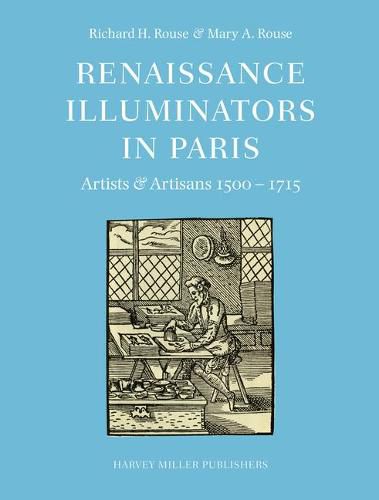Readings Newsletter
Become a Readings Member to make your shopping experience even easier.
Sign in or sign up for free!
You’re not far away from qualifying for FREE standard shipping within Australia
You’ve qualified for FREE standard shipping within Australia
The cart is loading…






The commercial manuscript book-trade in Paris, that had begun as early as the mid-12th century, was severely disrupted by the arrival of the first printing presses in Paris around 1475. This new invention converted a traditional system of book production that had developed and flourished over the centuries from a handcraft to the mechanical printing press. It was a change that affected not only the livelihood of those who wrote the books and the artists who decorated them, but also the social life of the whole workforce involved in the production of books. This publication traces the activities to which 16th- and 17th-century book artisans had to turn, faced as they were with a dwindling market for manuscripts. Those most affected were the illuminators and scribes who now had to seek alternative ways of making a living and so devise strategems for finding employment in other trades that would benefit from their skills. Thus the reader will discover well-known artists and illuminators finding jobs like adding illustrations to printed books, colouring wood-block prints and designing patterns and motifs for embroideries, tapestries and even glass and metal objects. A most interesting opportunity for illuminators was to get involved with the decorating of fans, a new fashion promoted late in the 17th century by the Sun King Louis XIV himself. In addition to the richly illustrated text, the volume also includes a Register of more than 500 named Illuminators in alphabetical order, giving also their affiliation to their alternative trades and listing personal details including family members and professional associates. The authors Richard and Mary Rouse, who are already widely known for their thorough research into the medieval book trade in Paris with their volume Manuscripts and their Makers, published a similar biographical Register of documented book producers up to the year 1500. With the present publication they are able to reconstruct how much the younger members and relatives of whole families of previous manuscript illuminators were able to continue to contribute to the now newly developing book-trade. This volume is therefore not only a contribution to the history of art and that of the book, but also provides a vivid glimpse into the social history of the period.
$9.00 standard shipping within Australia
FREE standard shipping within Australia for orders over $100.00
Express & International shipping calculated at checkout
The commercial manuscript book-trade in Paris, that had begun as early as the mid-12th century, was severely disrupted by the arrival of the first printing presses in Paris around 1475. This new invention converted a traditional system of book production that had developed and flourished over the centuries from a handcraft to the mechanical printing press. It was a change that affected not only the livelihood of those who wrote the books and the artists who decorated them, but also the social life of the whole workforce involved in the production of books. This publication traces the activities to which 16th- and 17th-century book artisans had to turn, faced as they were with a dwindling market for manuscripts. Those most affected were the illuminators and scribes who now had to seek alternative ways of making a living and so devise strategems for finding employment in other trades that would benefit from their skills. Thus the reader will discover well-known artists and illuminators finding jobs like adding illustrations to printed books, colouring wood-block prints and designing patterns and motifs for embroideries, tapestries and even glass and metal objects. A most interesting opportunity for illuminators was to get involved with the decorating of fans, a new fashion promoted late in the 17th century by the Sun King Louis XIV himself. In addition to the richly illustrated text, the volume also includes a Register of more than 500 named Illuminators in alphabetical order, giving also their affiliation to their alternative trades and listing personal details including family members and professional associates. The authors Richard and Mary Rouse, who are already widely known for their thorough research into the medieval book trade in Paris with their volume Manuscripts and their Makers, published a similar biographical Register of documented book producers up to the year 1500. With the present publication they are able to reconstruct how much the younger members and relatives of whole families of previous manuscript illuminators were able to continue to contribute to the now newly developing book-trade. This volume is therefore not only a contribution to the history of art and that of the book, but also provides a vivid glimpse into the social history of the period.